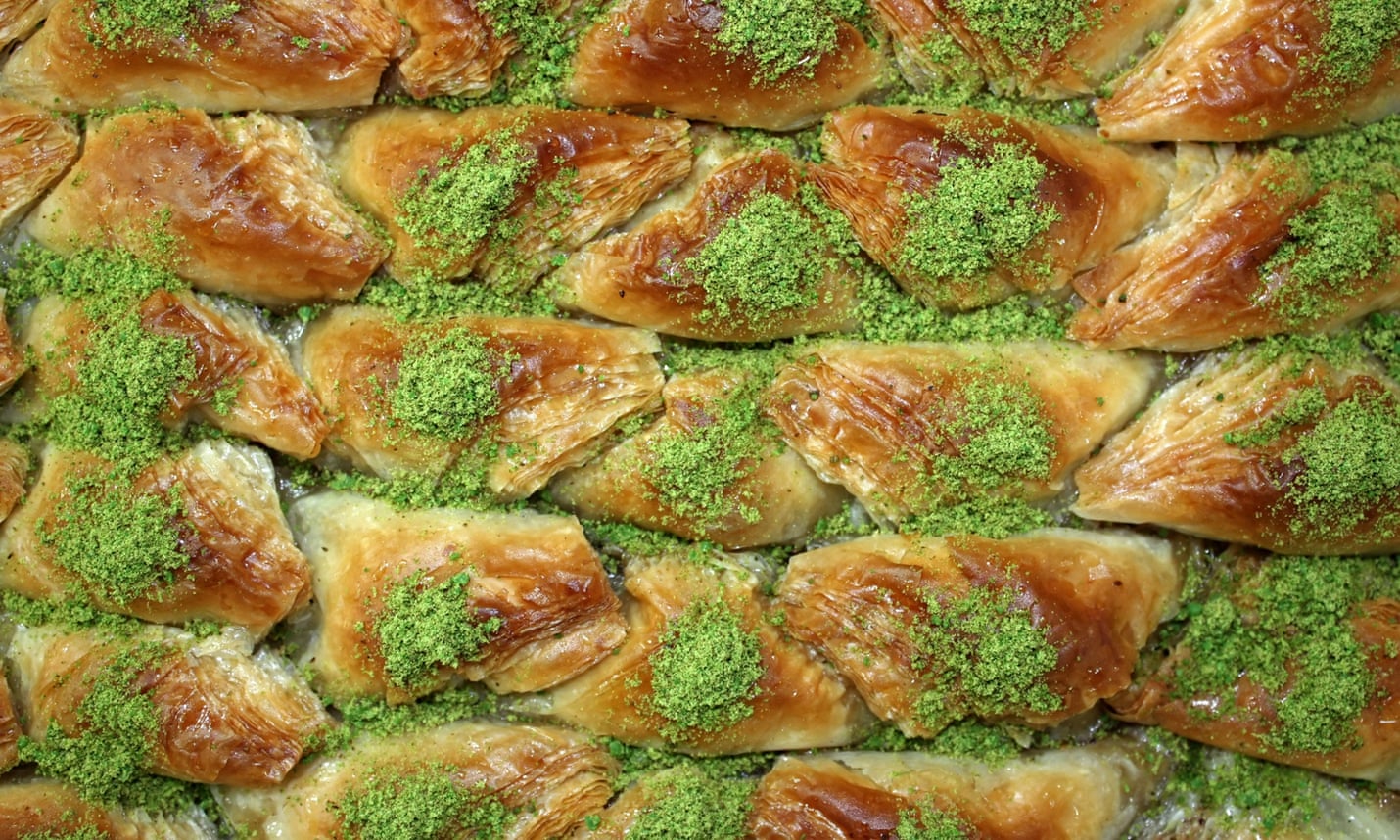Although there are many places that claim to have invented it, it’s likely that baklava originated in what is now the Middle East. During the Byzantine empire, it made its way westward into Anatolia, and then to Istanbul, where Ottoman chefs adapted it for the notoriously picky sultans living in Topkapi Palace.

Gaziantep baklava is baked in a wood-fired oven and made with dozens of layers of gossamer-thin filo pastry, syrup (honey is for amateurs, apparently) and the prized, locally grown Antep pistachio, which gives the filling of the delicacy its distinctive green colour. The nuts were the deciding factor for the EC. The hot, dry climate provides ideal growing conditions and gives the pistachios their bright green (rather than greeny yellow) colour. They’re also harvested in August, one month earlier than elsewhere, when they are higher in protein and fat.
At the last count, Gaziantep has more than 180 bakeries, some with adjoining cafes – serving the delicious finished product. One of the most famous is the Güllüoglu bakery, founded in 1871, which claims to be the world’s biggest baklava producer and has franchises in Istanbul, Athens, Los Angeles, New York and Tallinn. And the production process has changed very little from Byzantine times.
No comments:
Post a Comment